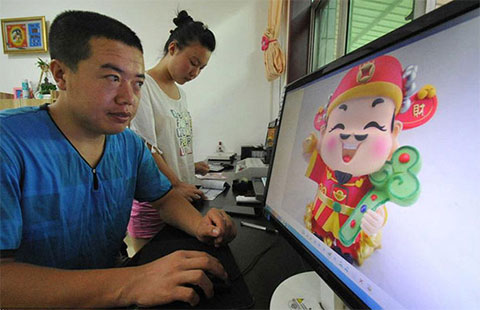China Eastern to cut debt ratio by end-2015
(Agencies) Updated: 2012-06-12 11:05China Eastern Airlines, one of China's top three carriers, aims to cut its debt-to-assets ratio to below 70 percent by the end of 2015 from its current 81 percent, its chairman said on Monday, amid a new round of capital injections by the government to support the country's aviation industry.
The company plans to reduce debt by raising funds from the market, through capital injections, and from its own profits, said Liu Shaoyong, speaking on the sidelines of the International Air Transport Association's (IATA) annual meeting.
Liu said he had no information on whether the Shanghai-based carrier would soon get new capital from the government.
The State-owned parent of its domestic rival China Southern Airlines Co Ltd is considering injecting capital into the carrier. Trading in China Southern has been suspended since June 5 pending further information.
Air China Ltd, the country's flag carrier, has said it plans to issue 1.05 billion yuan worth of new shares to controlling shareholder China National Aviation Holding Co to reduce bank borrowing.
Government injections were a lifeline for the country's top carriers when the cyclical global aviation industry suffered from the global financial crisis in 2008 and 2009.
High fuel costs and slowing demand growth have slashed the Chinese trio's first quarter profits by 50 to 86 percent, and analysts said they would not be surprised if China Eastern also revealed a fresh cash injection from its parent company.
China Eastern's senior vice president of alliances, Shan Chuanbo, also believed a new round of capital injections was likely because the "debt level is high."
The Shanghai based carrier had total debt of about 92.9 billion yuan ($14.58 billion) by the end of 2011, representing a gearing ratio of 81 percent against total assets.
"The state's support to aviation industry is a long-term strategy," Liu said.
Government capital injections would not be just one-off cases, nor would they be given to only one or two of the three major Chinese airlines, he added.
Falling freight traffic was a major problem for Chinese airlines, Liu said. "Civil aviation industry now faces three major hurdles, high oil prices, negative growth in cargo, and the sliding global economy, especially in Europe."
Still, analysts were positive about the growing passenger demand in China.
"The operating environment has been tough since the second half of last year and jet fuel prices are high," said Moses Ma, a transport analyst at ICBC International.
Passenger demand in China should pick up in June and July, the traditional peak season, he said.
"Chinese airlines are likely to outperform many of their overseas competitors on solid domestic passenger demand," Ma added.
Shares in China Eastern have fallen about 13 percent this year in Hong Kong, underperforming a 2.7 percent gain on the blue chip Hang Seng Index in the same period.
- Double-hit leads to escalating market adjustment
- Economic cooperation key for East Asia: expert
- China tightens its grip on online payment
- Bicycle riding device manufacturer raises 80m yuan
- Central bank proposes cap on third-party online payments
- Caixin China manufacturing PMI falls to two-year low
- BMW redefines China strategy with new innovative thrust
- Vehicle recalls blamed on shoddy quality control, growing customer awareness

















